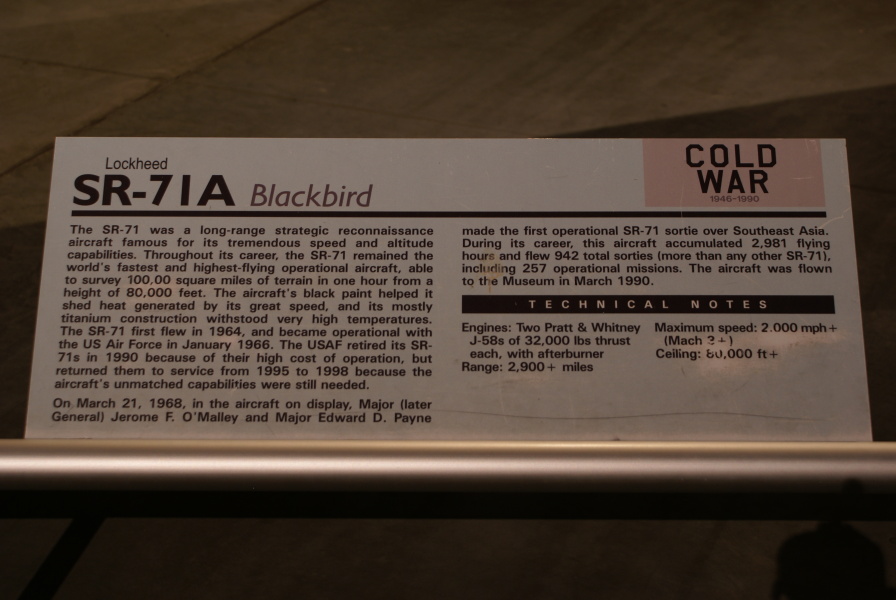| Prev |
heroicrelics.org Air Force Museum Site Index SR-71 Gallery |
Next |
dsca3496.jpg
The sign accompanying the plane. It reads
Lockheed SR-71A Blackbird
The SR-71 was a long-range strategic reconnaissance aircraft famous for its tremendous speed and altitude capabilities. Throughout its career, the SR-71 remained the world's fastest and highest-flying operational aircraft, able to survey 100,000 square miles of terrain in one hour from a height of 80,000 feet. The aircraft's black paint helped it shed heat generated by its great speed, and its mostly titanium construction withstood very high temperatures. The SR-71 first flew in 1964, and became operational with the US Air Force in January 1966. The USAF retired its SR-71s in 1990 because of their high cost of operation, but returned them to service from 1995 to 1998 because the aircraft's unmatched capabilities were still needed.
On March 21, 1968, in the aircraft on display, Major (later General) Jerome F. O'Malley and Major Edward D. Payne made the first operational SR-71 sortie over Southeast Asia. During its career, this aircraft accumulated 2,981 flying hours and flew 942 total sorties (more than any other SR-71), including 257 operational missions. The aircraft was flown to the Museum in March 1990.
Technical Notes Engines: Two Pratt & Whitney J58s of 32,000 lbs. thrust each, with afterburner Range: 2,900+ miles Maximum speed: 2,000 mph+ (Mach 3+) Ceiling: 80,000 ft+

| Time picture taken | Wed May 21 09:40:32 2014 |
| Location picture taken | Cold War Gallery Air Force Museum Dayton, OH |
| Prev | SR-71 Gallery | Next |